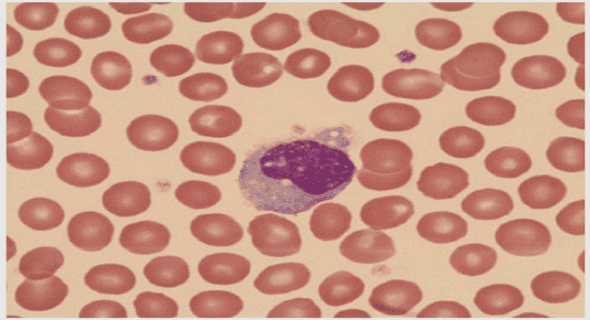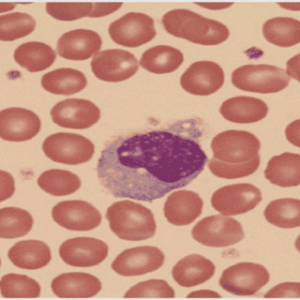(Downloads - 0)
For more info about our services contact : help@bestpfe.com
Table of contents
I. General introduction
1 Socio-economical context
2 Plant immunity
2.1 MAMP-triggered immunity
2.1.1 MAMPs
2.1.2 PRRs, receptors to MAMPs and DAMPs
2.1.2.1 Leucine rich repeat (LRR) receptors
2.1.2.2 Lysin motif (LysM) receptors
2.1.3 PRR-mediated signaling and defense
2.1.4 PRR-mediated disease resistance
2.2 Effector-triggered immunity
2.2.1 Effectors target MTI
2.2.2 ETI responses
3 Grapevine: its biotic interactions and immunity
3.1 Biotic interactions
3.1.1 Fungi
3.1.2 Bacteria
3.2 Grapevine MAMP-triggered immunity
II. Flagellin-triggered immunity
1 Bacterial flagellum and flagellin
2 Flagellin: a general elicitor of MTI
2.1 flg22/FLS2 perception system in plants
2.1.1 Ligand binding
2.1.2 Downstream signaling
2.1.3 FLS2/flg22 signaling regulation
2.1.4 FLS2 protein structure
2.1.5 Crosstalk with brassinosteroid signaling and other MAMP signaling pathways
2.1.6 FLS2 polymorphism: ligand specificities
2.2 Extra-flg22 flagellin recognition
2.2.1 flgII-28: a novel flagellin epitope for plants?
2.2.2 Flagellin glycosylation
2.3 Flagellin/TLR5 perception in animals
3 The flagellin perception upon plant-bacteria interaction
3.1 Evasion of flagellin-mediated immunity
3.2 The role of FLS2-mediated sensing
III. Chitin-triggered immunity
1 Microbial GlcNAc-containing ligands
2 Chitin, a structural component of fungal cell walls
3 Chitin: elicitor of MTI in plants
3.1 OsCEBiP/OsCERK1 perception system in rice
3.2 CERK1: perception system in Arabidopsis
3.2.1 AtLYM2-mediated chitin perception independently of AtCERK1
3.3 Tight regulation of chitin and PGN perception
3.4 Role of other LysM-RLKs (LYKs) in Arabidopis
3.5 Chitosan perception
3.6 Chitin perception by animals
4 Role of chitin perception in plant immunity
AIMS OF WORK
MATERIALS AND METHODS
1 Materials
1.1 Grapevine materials
1.1.1 Cell suspensions
1.1.2 In vitro plantlets
1.1.3 Plants
1.2 Arabidopsis materials
1.2.1 Cell suspensions
1.2.2 Plants
1.3 Microorganisms
1.3.1 Botrytis cinerea
1.3.2 Plasmopara viticola
1.3.3 Burkholderia phytofirmans
1.4 Elicitors
1.4.1 Peptides
1.4.2 Oligosaccharides
1.4.3 Elicitor doses
2 Methods
2.1 MAMP responsiveness in cells and in vitro plantlets
2.1.1 Cell culture equilibration for early signaling bioassays
2.1.2 Luminol-based oxidative burst analysis
2.1.3 Analysis of free cytosolic calcium concentration variation
2.1.4 MAPK bioassay
2.1.5 Defense gene induction assay
2.1.6 Cell death quantification
2.2 Biochemistry, molecular biology and bioinformatics
2.2.1 Total protein extraction from grapevine cells and Arabidopsis
2.2.2 Total protein extraction from in vitro grapevine plantlets
2.2.3 Protein extraction enriched in membrane fraction
2.2.4 Detection of phosphorylated MAPK by Western blotting
2.2.5 Detection of GFP and VvFLS2 by Western blotting
2.2.6 Generation of VvFLS2 antibody and dot-blot specificity test
2.2.7 Isolation of total RNA
2.2.8 cDNA synthesis and quantitative real-time PCR (qPCR)
2.2.9 Bioinformatics
2.2.10 General cloning technics
2.2.11 Cloning of GFP-tagged or antisense VvPRRs by Gateway® technology
2.3 Plant transformation
2.3.1 Grapevine transformation and plantlet generation via somatic embryogenesis
2.3.2 Arabidopsis transformation and mutant screening
2.4 Histochemical GUS detection in Arabidopsis pPR1::GUS seedlings
2.5 Flg22- triggered growth inhibition assays on Arabidopsis and grapevine
2.6 Protection assays on grapevine leaf discs
2.7 Grapevine infection with B. phytofirmans
2.8 Confocal microscopy
RESULTS AND DISCUSSION
I. Screening of MAMP responsiveness in grapevine
II. Flagellin perception system in grapevine
Results
1 Flg22 induces immune responses and resistance against Botrytis cinerea in grapevine
2 In silico characterization of the predicted grapevine FLAGELLIN SENSING 2 receptor: VvFLS2
3 VvFLS2 functionally complements the Arabidopsis fls2 mutant and is localized at the plasma membrane
4 Recognition specificities of flagellin perception in grapevine
4.1 Perception of B. phytofirmans-derived flg22 induces weaker defense responses in grapevine than do X. campestris- or P. aeruginosa-derived flg22
4.2 AtFLS2 and VvFLS2 have different recognition specificities
4.3 B. phytofirmans overcomes Xc flg22-induced MTI to colonize grapevine plants
5 Silencing of VvFLS2 in grapevine induced defects in flg22 immune signaling
5.1 Generation of antisense VvFLS2 lines
5.2 Screening of asVvFLS2 lines for VvFLS2 transcript amounts and flg22 responsiveness
5.3 The line #2-22 is affected in flg22 signaling
5.4 VvFLS2 protein detection
6 FLS2-like gene in grapevine
Discussion
1 The FLS2/flg22 perception system is conserved in grapevine and triggers a typical MTI
2 The reduction in VvFLS2 transcript levels affects the flg22 signaling in grapevine
3 Weak eliciting activity of Bp flg22 in grapevine
4 AtFLS2 and VvFLS2 have different recognition specificities
5 B. phytofirmans overcomes MTI in Arabidopsis and grapevine to colonize plants
6 VvFLS2-like gene in grapevine
Perspectives
III. Chitin perception system in grapevine
Results
1 Chitin and chitosan induce defense responses in grapevine
2 LysM-RLKs (LYKs) in grapevine and identification of putative AtCERK1 orthologs in grapevine
2.1 In silico characterization of the predicted grapevine CHITIN ELICITOR RECEPTOR KINASE 1
orthologs: VvCERK1, 2 and 3
2.2 Functional complementation of the Arabidopsis cerk1-2 mutant with grapevine VvCERKs
2.2.1 Constitutive overexpression of VvCERK1 does not complement cerk1-2
2.2.2 Constitutive overexpression of VvCERK2 or VvCERK3 leads to cell death
2.2.3 Inducible expression of VvCERKs in cerk1-2 background
2.3 Silencing of VvCERKs in grapevine
3 LysM-RLPs (LYPs) family and identification of putative OsCEBiP ortholog in grapevine (VvCEBiP)
3.1 In silico characterization of the predicted grapevine CHITIN ELICITOR BINDING PROTEIN
orthologs
3.2 Silencing of VvCEBiP1 in grapevine
Discussion
1 Chitin is a weak elicitor in grapevine
2 Role of VvCERK1
3 Role of VvCERK2
4 VvCERK3 can partly complement the chitin-induced ROS burst in Atcerk1-2
5 A partial loss of VvCERK3 in grapevine does not attenuate chitin responses
6 VvCERK-associated cell death phenotype
7 Lethality of antisense VvCERK1 and VvCERK2 calli
8 The role of the closest grapevine ortholog of OsCEBiP in chitin perception



